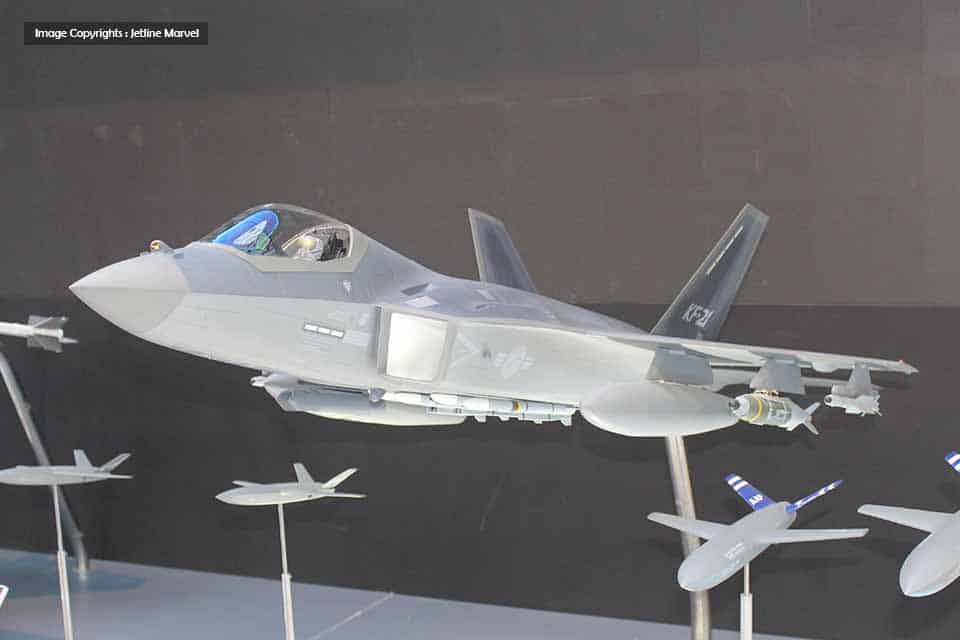Aerospace
South Korean KF-21 Completed First Successful Aerial Refueling

The first aerial refuelling test of South Korea’s indigenous KF-21 Boramae fighter jet was successfully completed, marking a key milestone in the country’s defense capabilities.
Refueling from a Republic of Korea (ROK) Air Force KC-330 aircraft off the southern coast, the Boramae fighter jet took off from Sacheon Airbase, some 183 miles southeast of Seoul. The Defence Acquisition Programme Administration (DAPA) hailed this development, which represents a significant advancement for this state-of-the-art aircraft.
The successful aerial refueling test corresponds with a staged production plan intended to ease worries brought forward by the feasibility assessment carried out a year ago. The research recommended cutting production to just 20 units and made additional test suggestions. A DAPA official continues to state that after discussions with pertinent agencies, plans are in place to conclude verification testing by June of this year and complete a contract for the remaining 20 units by February of the following year.
The kf 21, which has been compared to the Turkish KAAN and the Indian AMCA, has a more stealthy airframe than fourth-generation aircraft, but it is not yet capable of fifth-generation fighter capabilities. However, in the future, modifications such as internal weapons bays might force South Korea to reclassify it as a fifth-generation fighter. Even while South Korea has made significant strides towards constructing the KF-21, other countries, including Turkey and India, are also stepping up their efforts to push plans for creating fifth-generation fighter jets.
As an initial phase, KAI boramae intends to manufacture a two-seat variant of the kai kf 21 boramae equipped with manned/unmanned teaming (MUM-T) capabilities. According to current plans, the Block 2 kf 21 fighter is slated for an upgrade to a low observability (LO) configuration, elevating it to the status of a fifth-generation fighter.
Additionally, KAI has put forward a proposal for the development of a Block 3 kf 21 boramae fighter jet, categorized as a sixth-generation fighter. This iteration would be larger, boasting enhanced stealth features and capabilities. It would incorporate more potent engines and operate within a comprehensive ‘system of systems’ framework, integrating with unmanned effectors for increased effectiveness.
With the KF-21’s production set to start later in the year, DAPA intends to finalise an agreement with KAI by the beginning of 2024. The Republic of Korea Air Force (ROKAF) is expected to receive 120 KF-21 fighters by 2032.
The whole production plan for 40 kf21s has been approved by the Defence Project Promotion Committee, with an estimated cost of 7.92 trillion won (US$5.9 billion) between now and 2028.

Aerospace
Boeing Transfers Rocket Stage to NASA, Paving Way for Human Moon Mission

Boeing has achieved a significant milestone by providing NASA with the second core stage of the Space Launch System (SLS) rocket.
This crucial component, crafted at NASA’s Michoud Assembly Facility (MAF), is set to propel the Artemis II crew into lunar orbit, marking humanity’s return to deep space after a 50-year hiatus.
The monumental Boeing-built rocket stage, the largest element of the Artemis II mission, will embark on a journey aboard the Pegasus barge, traveling 900 miles to NASA’s Kennedy Space Center.
Comparison of two legendary aircraft B777x vs B747 aircraft:Click here
Upon arrival, it will be meticulously integrated with other essential Artemis II components, including the upper stage, solid rocket boosters, and NASA’s Orion spacecraft within the iconic Vehicle Assembly Building. This intricate integration process is a vital step toward the eagerly anticipated Artemis II launch, slated for 2025.
“Boeing-built products helped land humankind on the moon in 1969, and we’re proud to continue that legacy through the Artemis generation,” remarked Dave Dutcher, vice president and program manager for Boeing’s SLS program. “Together, with NASA and our industry partners and suppliers, we are building the world’s most capable rocket and paving the way to deep space through America’s rocket factory in New Orleans.”
NASA, Lockheed Martin Reveal X-59 Quiet Supersonic Aircraft:Click here
The delivery of Core Stage 2 marks a significant achievement in the evolution of the SLS rocket. Towering over 200 feet and powered by four RS-25 engines, this core stage, coupled with two solid-fueled booster rockets, will generate a staggering 8.8 million pounds of thrust. This immense power is crucial to launching Artemis II and future missions into the vast expanse of space.
The SLS rocket stands unparalleled in its capability to transport both crew and substantial cargo to the moon and beyond in a single launch. Its extraordinary capacity will facilitate the delivery of human-rated spacecraft, habitats, and scientific missions to destinations including the moon and Mars, ushering in a new era of space exploration.
-

 Travel1 week ago
Travel1 week agoAir India to Expand US Operations with Three New Routes After a Decade
-

 Travel2 weeks ago
Travel2 weeks agoWhy We Should Avoid These Stamps in a Passport
-

 Airlines1 month ago
Airlines1 month agoInvestigations Reveal Fake Chinese Titanium in Boeing and Airbus Jets
-

 Tech4 weeks ago
Tech4 weeks agoChina’s CATL Plans 1,800-Mile Electric Plane Launch by 2027
-

 Airport3 days ago
Airport3 days agoTop 10 Largest Airports in the World by Size
-

 Aerospace4 weeks ago
Aerospace4 weeks agoChina’s Fighter Jets Turn Wings into Autonomous Drones
-

 Airlines4 days ago
Airlines4 days agoAir India Rolls Out A350s for Delhi-New York JFK and Newark Routes
-

 Defence3 weeks ago
Defence3 weeks agoBoeing Enhances Chinook with New Engines and Block II Upgrades at $96 Million







